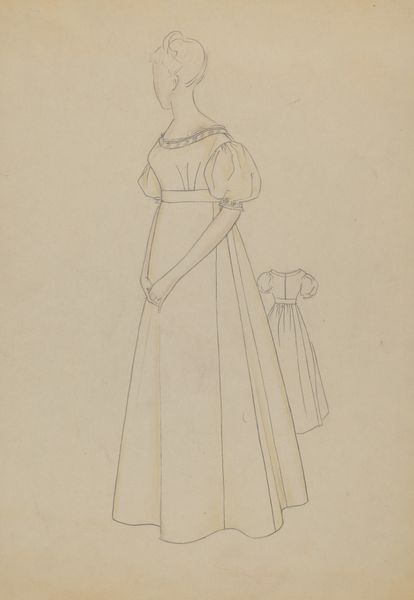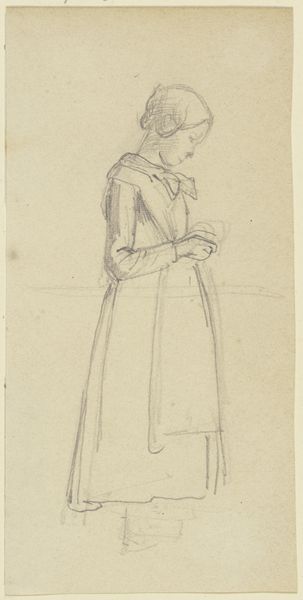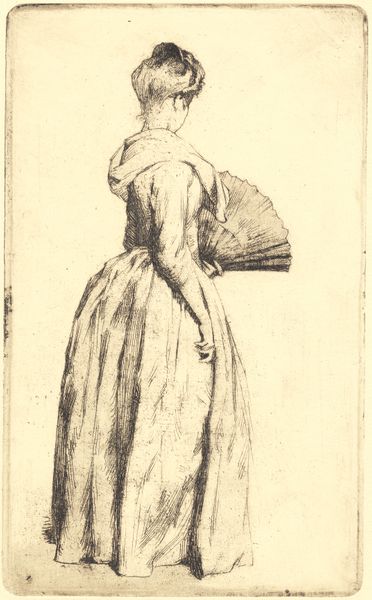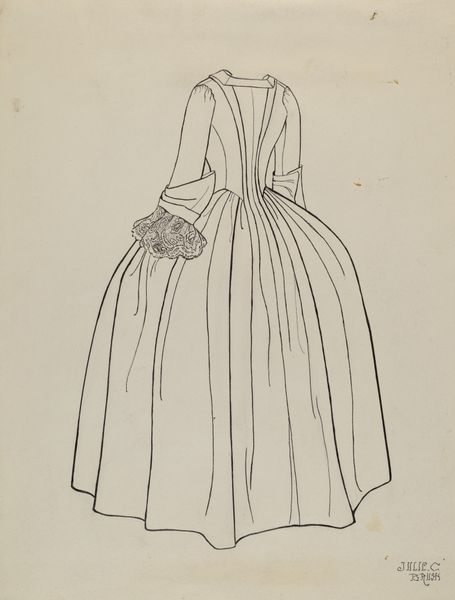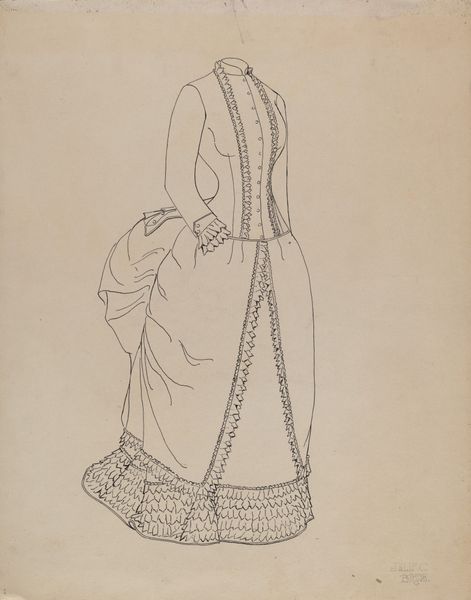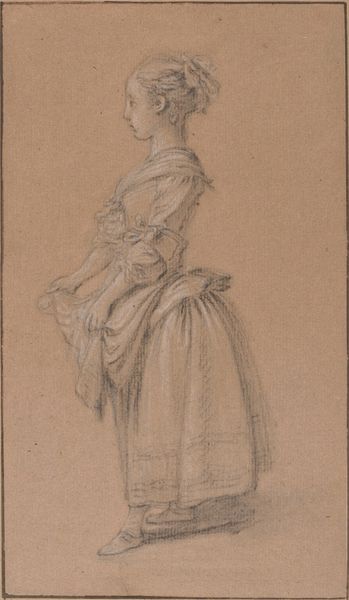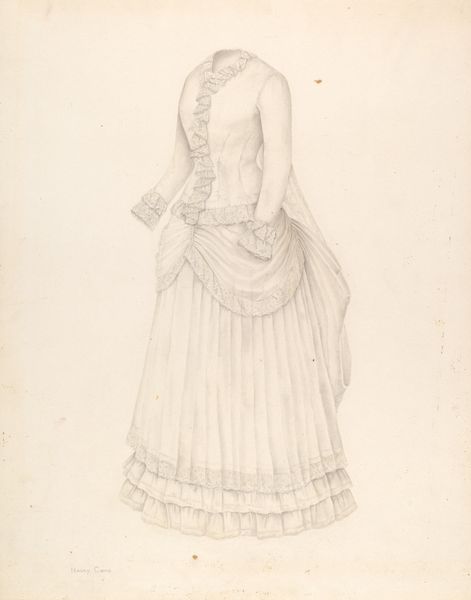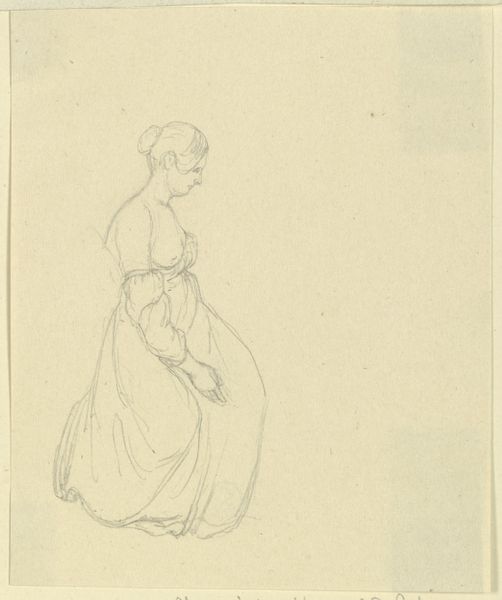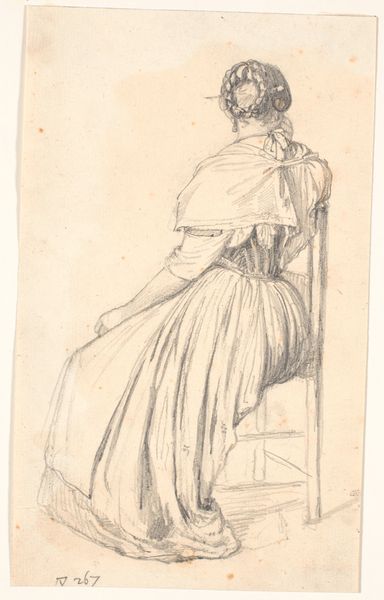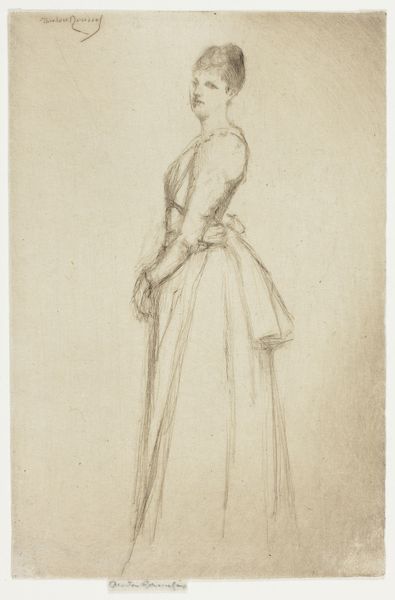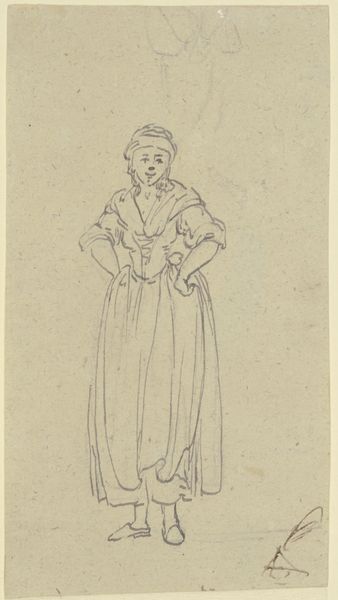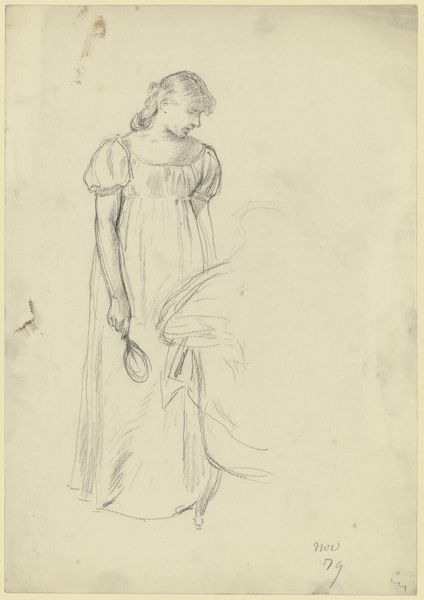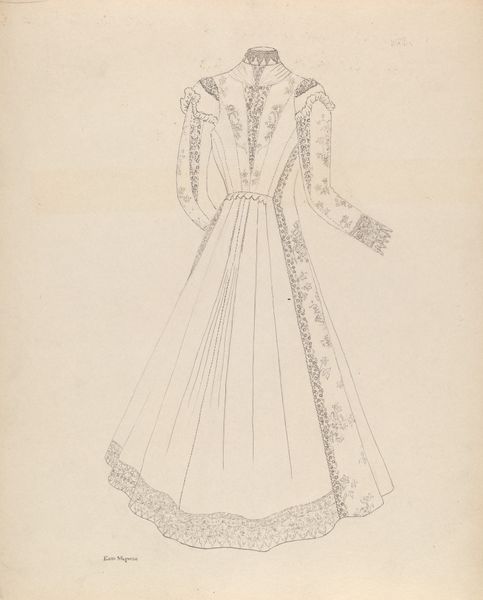
Stående ung pige med hånden på ryggen, set skråt bagfra. 1810 - 1848
0:00
0:00
drawing, pencil
#
portrait
#
drawing
#
pencil sketch
#
pencil
#
genre-painting
Dimensions: 179 mm (height) x 115 mm (width) (bladmaal)
Editor: Here we have Christen Købke's pencil drawing, "Standing Young Girl with Hand on Her Back, Seen Diagonally from Behind," created sometime between 1810 and 1848. The sketch is delicate and somehow reserved. What do you make of it? Curator: This work really speaks to the rise of genre painting and the bourgeois self-perception in the Danish Golden Age. Købke wasn’t painting royalty or religious scenes. He chose a common subject, a young girl. The act of turning away, the hidden hand, makes it so the public, who would view it later in exhibitions, could put themselves into the moment. Don't you think the subtle realism helps facilitate that? Editor: Definitely! I can almost feel the texture of the paper and imagine her dress. Does the location where it was exhibited shape your understanding? Curator: Absolutely. Think of the context: the exhibitions, the art societies that emerged. These venues gave artists like Købke the chance to display works to a wider audience, thereby influencing public taste and even solidifying a sense of national identity. How might its display at the SMK change its perception? Editor: That's insightful. The SMK, being a national gallery, perhaps elevates the commonplace to a statement about Danish values and aesthetics. Curator: Precisely! It suggests that even seemingly mundane scenes are worthy of attention and, ultimately, national preservation. I now look differently at her dress because this is, in a sense, what people saw on the street. So much data here. Editor: I've learned so much by considering its socio-historical context. Curator: And I by reflecting on its modern presentation!
Comments
No comments
Be the first to comment and join the conversation on the ultimate creative platform.
